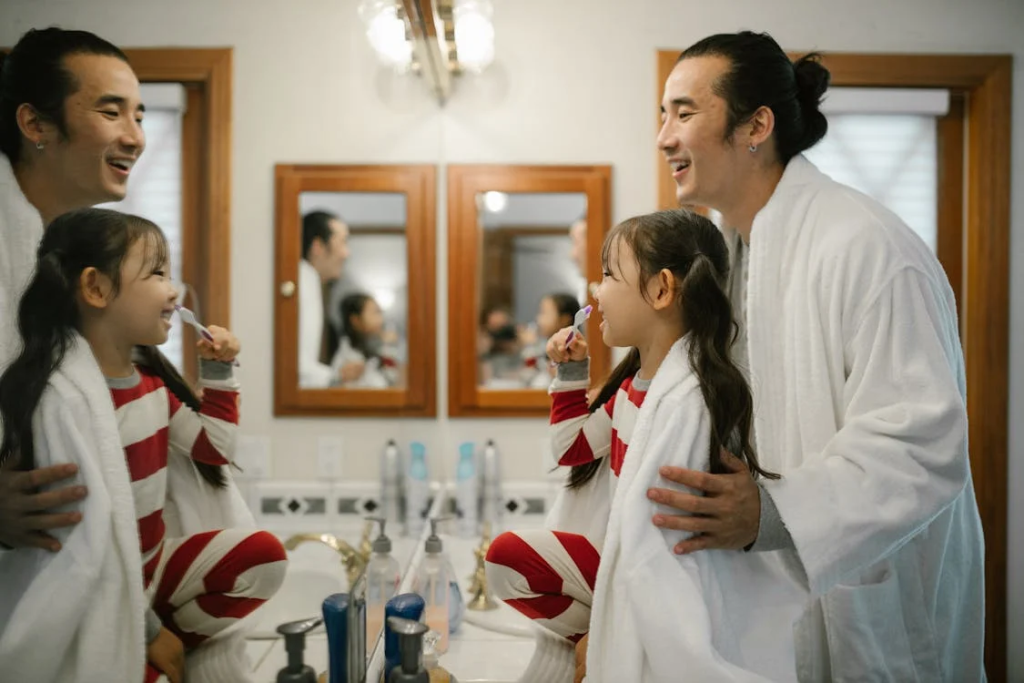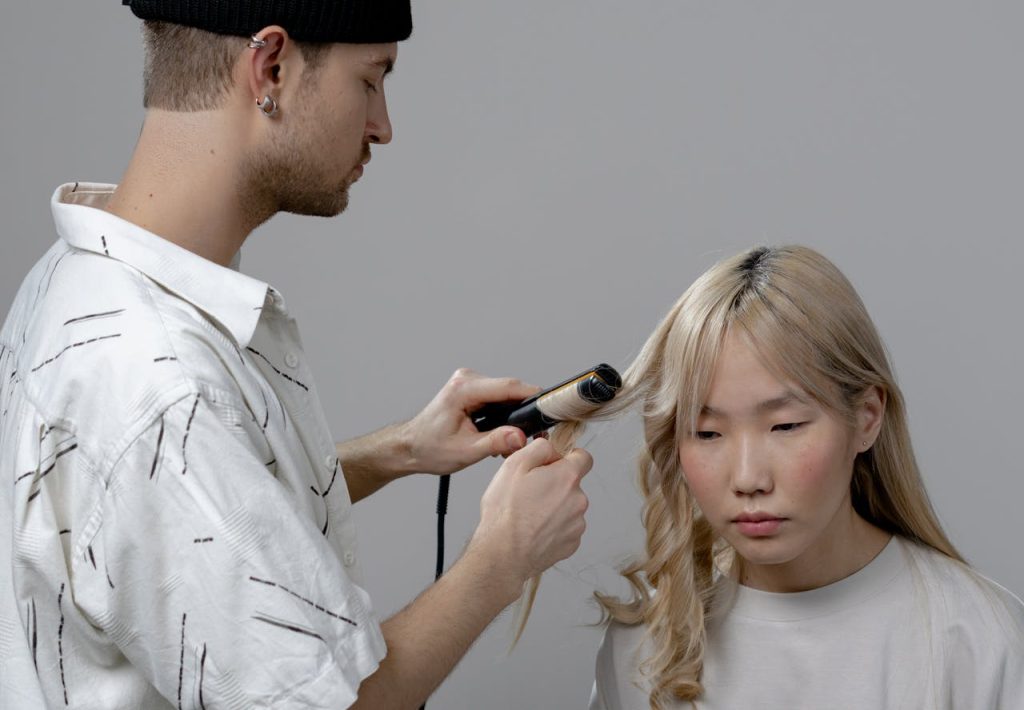Personal Care
9 Things Dentists Would Never Do To Their Teeth — And Neither Should You

Your smile says a lot about you, and maintaining it takes more than just brushing twice a day. But have you ever wondered what dentists actually avoid when it comes to their own dental health? As it turns out, the people who spend their days fixing teeth have a strict list of personal “no-go” habits they stay away from — and for good reason.
Let’s explore the top 9 things dentists would never do to their own teeth, and what you can learn from their expert advice.
🚫 1. Dentists Never Use Their Teeth as Tools
From opening plastic packaging to ripping tape, many people use their teeth as a convenient backup tool — but that’s a shortcut dentists strongly warn against. Using your teeth this way can cause chipping, cracking, or even breakage, especially on your front incisors.
🦷 “Your teeth weren’t made to open bottles or plastic seals. That’s what scissors are for,” says Dr. Danny Snyder, DDS.
What to do instead: Always reach for proper tools. Avoid putting unnecessary pressure on your teeth that could lead to long-term damage.
🍿 2. Dentists Don’t Bite Down on Hard Foods Like Ice or Popcorn Kernels
Chewing on hard foods might feel satisfying, but it’s a fast track to cracked enamel and broken molars. Ice, unpopped popcorn kernels, and hard candies are among the most dangerous.
Dentist-approved advice:
Avoid crunching down on anything that doesn’t easily break apart in your hand. It’s not worth a fractured tooth or an emergency root canal.
🥤 3. They Avoid Constantly Sipping Sugary or Acidic Drinks
That leisurely iced coffee you sip all morning or the sports drink during workouts? Bad news for your teeth. Continuous sipping creates a prolonged acidic environment in your mouth, which wears down enamel and fuels cavities.
Tip from the pros: If you do drink sugary beverages, try to consume them in one sitting instead of nursing them over hours — and rinse your mouth with water afterward.
📏 4. They Never Skip Flossing (Even If They Brush Religiously)
Many people assume brushing alone is enough — but dentists know better. Flossing reaches up to 35% of the tooth surface that brushing simply can’t access.
🪥 “Flossing is like cleaning between the couch cushions — the stuff you miss can cause real problems later,” says Dr. Emily Ford, DDS.
Build the habit: Floss at least once daily. Consider using a water flosser if you struggle with traditional string floss.
😬 5. They Don’t Ignore Tooth Pain or Bleeding Gums
Dentists know that minor dental discomfort can be a sign of something much bigger — like infection, inflammation, or decay.
If you’re noticing sensitivity to temperature, pain when chewing, or gums that bleed regularly, don’t brush it off. These are early red flags your body is using to alert you.
Take action early: Addressing problems when they’re small saves you money, pain, and time later on.
🧃 6. They Avoid Brushing Immediately After Acidic Meals or Drinks
Brushing right after a glass of orange juice or a vinegar-heavy salad can actually damage your enamel — not protect it.
Why? Acids soften the enamel temporarily. Brushing during this window can cause erosion.
Dentist’s tip: Wait at least 30 minutes after consuming anything acidic before brushing. Rinse with water or chew sugar-free gum in the meantime to neutralize acid.
🧼 7. They Don’t Use Abrasive DIY Whitening Hacks
From baking soda to charcoal powder, DIY tooth whitening trends may promise pearly whites — but they can come with irreversible damage.
⚠️ “You can’t ‘scrub’ your teeth white without also scrubbing away enamel,” warns Dr. Lina Torres, DDS.
What to do instead: Stick with dentist-approved whitening products or get a professional treatment to safely brighten your smile.
🪥 8. They Don’t Use Hard-Bristled Toothbrushes
Hard bristles may feel like they’re doing a better job, but they’re harsh on enamel and gum tissue. Over time, they can cause recession and sensitivity.
Best practice: Use a soft-bristled brush and gentle, circular motions. An electric toothbrush with a pressure sensor is a great investment.
🕒 9. They Never Miss Regular Dental Check-Ups
Even dentists need dentists! Regular cleanings and exams are non-negotiable for maintaining oral health.
Skipping appointments can allow hidden issues — like cavities under fillings or early gum disease — to go unnoticed until they become major problems.
Golden rule: See your dentist at least every 6 months for a professional cleaning and oral exam.
🦷 Final Thoughts: Protect Your Smile Like a Pro
Dentists have a front-row seat to what not to do when it comes to dental care. By avoiding these common habits and embracing smarter oral hygiene routines, you’ll preserve your smile for years to come.
Remember: A little prevention today means fewer dental bills, less discomfort, and healthier teeth tomorrow.
Personal Care
How to Reparent Your Inner Child: Healing and Self-Compassion

Reparenting your inner child is a transformative process that allows you to heal emotional wounds from the past and cultivate a nurturing relationship with yourself. This practice involves recognizing and addressing unmet needs from childhood, fostering self-compassion, and developing healthier coping mechanisms. In this guide, we’ll explore what reparenting entails, its benefits, and practical steps to begin your journey toward emotional well-being.
Understanding the Inner Child
The concept of the “inner child” refers to the part of your psyche that retains the emotions, experiences, and memories from your early years. This aspect of yourself can influence your thoughts, behaviors, and emotional responses in adulthood. Unresolved childhood experiences may manifest as self-doubt, fear of abandonment, or difficulty setting boundaries.
What Is Reparenting?
Reparenting is the process of providing the care, support, and nurturing that you may have lacked during your formative years. It involves:
- Acknowledging Past Wounds: Recognizing the impact of unmet needs and emotional injuries from childhood.
- Developing Self-Compassion: Treating yourself with kindness, understanding, and patience.
- Establishing Healthy Boundaries: Learning to say no and protect your emotional well-being.
- Cultivating Emotional Awareness: Identifying and processing your feelings in a healthy manner.
By reparenting yourself, you can break free from negative patterns and foster a more positive self-image.
Benefits of Reparenting Your Inner Child
Engaging in reparenting practices can lead to numerous psychological and emotional benefits, including:
- Improved Self-Esteem: Developing a stronger sense of self-worth and confidence.
- Enhanced Emotional Regulation: Managing emotions more effectively and reducing reactivity.
- Healthier Relationships: Building connections based on mutual respect and understanding.
- Reduced Anxiety and Depression: Alleviating symptoms associated with unresolved childhood trauma.
Signs Your Inner Child Needs Healing
Emotional Symptoms:
- Feeling “too sensitive” or overreacting to minor things
- Chronic self-doubt despite external success
- Fear of abandonment that affects relationships
- Difficulty receiving compliments or love
- Feeling like an imposter in adult roles
Behavioral Patterns:
- People-pleasing at your own expense
- Perfectionism that never feels “good enough”
- Self-sabotage when things go well
- Addictive behaviors (food, shopping, substances) to numb feelings
- Either clinging to or avoiding intimacy
Physical Manifestations:
- Unexplained body tension or pain
- Startle response to loud noises or sudden movements
- Sleep disturbances rooted in childhood fears
- Digestive issues linked to anxiety patterns
The Reparenting Process: Step-by-Step
Phase 1: Building Awareness
- Identify Your Triggers
- Keep an “emotional flashback journal”
- Note when reactions feel bigger than the situation warrants
- Look for patterns (certain tones of voice, types of criticism, etc.)
- Connect Present Reactions to Past Wounds
- Ask: “When was the first time I felt this way?”
- Look at childhood photos to spark memories
- Notice age regression in reactions (feeling like a teen, young child, etc.)
Phase 2: Meeting Core Needs
Safety Needs:
- Create physical safe spaces (a cozy corner, comforting textures)
- Develop grounding techniques for emotional safety
- Establish healthy boundaries with others
Attachment Needs:
- Practice secure self-attachment through daily check-ins
- Learn to self-soothe before seeking external comfort
- Build trust in yourself through small promises kept
Autonomy Needs:
- Support your own choices without self-judgment
- Celebrate small acts of independence
- Balance connection with healthy separation

Phase 3: Practical Reparenting Techniques
1. Dialoguing Exercises
- Write letters between your adult self and inner child
- Use your non-dominant hand for child-self writing
- Create “ideal parent” conversations
2. Nurturing Activities
- Revisit childhood joys (swings, finger painting, favorite childhood foods)
- Create routines your child self needed (consistent bedtimes, healthy meals)
- Develop comforting rituals (storytime before bed, Saturday morning cartoons)
3. Cognitive Restructuring
- Identify limiting childhood beliefs
- Create affirmations that counter old messages
- Develop new neural pathways through repetition
Advanced Healing Modalities
Somatic Approaches:
- Trauma-informed yoga
- EMDR therapy for childhood memories
- Biofeedback for emotional regulation
Expressive Therapies:
- Sand tray therapy
- Psychodrama techniques
- Music and art therapy
Attachment Repair:
- Ideal parent figure protocol
- Internal family systems therapy
- Group reparenting work
Common Challenges in Reparenting
Resistance:
- When self-care feels uncomfortable
- Overcoming the belief you don’t deserve care
- Dealing with the vulnerability of self-compassion
Regression:
- Managing childlike emotional states
- Balancing adult responsibilities with healing
- Handling feelings of shame about needs
Integration:
- Bringing healed parts into daily life
- Maintaining progress during stress
- Developing consistent practice
Measuring Your Progress
Signs of healing include:
- Fewer intense emotional triggers
- Increased self-compassion
- Healthier relationship patterns
- More joy and spontaneity
- Improved physical wellbeing
Remember: Healing isn’t linear. Some days you’ll feel like a nurturing parent to yourself; other days, the wounded child will take over. That’s normal.
When to Seek Professional Help
Consider therapy if you:
- Have a history of severe trauma
- Experience dissociation or memory gaps
- Struggle with self-harm or suicidal thoughts
- Find self-help methods aren’t enough
Therapeutic Approaches That Help:
- Internal Family Systems (IFS)
- EMDR
- Somatic Experiencing
- Attachment-based therapy
Daily Reparenting Practices
Morning Routine:
- Check in with how your inner child feels
- Set intentions for the day
- Offer reassurance about upcoming challenges
Throughout the Day:
- Pause before reacting to stressors
- Ask: “What does my inner child need right now?”
- Celebrate small wins
Evening Reflection:
- Review emotional experiences
- Comfort any distressed parts
- Express gratitude for growth
Incorporating Reparenting into Daily Life
Consistency is key when it comes to reparenting. Incorporate the following practices into your daily routine:
- Mindfulness Meditation: Cultivate present-moment awareness to connect with your emotions.
- Affirmations: Repeat positive statements that reinforce self-worth and resilience.
- Self-Care Rituals: Prioritize activities that promote physical, emotional, and mental well-being.
The Lifelong Journey
Reparenting isn’t about achieving some perfect healed state – it’s about developing an ongoing loving relationship with all parts of yourself. As life presents new challenges, you’ll continue discovering new layers to heal and nurture.
Remember: Every moment you spend reparenting yourself is rewriting your neural pathways and creating a new legacy – not just for yourself, but potentially for future generations.
From Youtube: Strategies for Reparenting the Inner Child
Personal Care
Why Regular Massages Could Be the Game-Changer Your Body and Mind Crave

Table of Contents
In today’s whirlwind of deadlines, notifications, and never-ending to-do lists, it’s easy to feel like you’re constantly running on empty. Between juggling responsibilities and trying to keep stress at bay, how often do we pause and ask, “What does my body really need right now?”
Chances are, your body’s been whispering the answer all along: touch.
Not just any touch—healing, intentional, restorative touch. Massage therapy isn’t just an indulgence at a spa; it’s a centuries-old practice that’s now backed by modern science as a powerful tool for holistic wellness. From melting away physical tension to uplifting your emotional landscape, massage therapy has evolved into a sanctuary of healing for those seeking genuine self-care.
The Power of Human Touch: Why Massage Goes Deeper Than You Think
Let’s be real—there’s something undeniably magical about the human touch. It’s grounding, comforting, and surprisingly transformative. Massage therapy channels this innate need for connection and healing. With every skilled stroke, it whispers calm into our nervous system, unwinds tension coiled in our muscles, and invites our mind to slow down and just breathe.
Unlike quick fixes or surface-level remedies, massage reaches deeper—physically and emotionally. It reminds us of our humanity and nudges us back into balance.
Massage: An Ancient Practice That’s More Relevant Than Ever
You’re not the first to seek healing in the hands of a massage therapist. In fact, people have been doing it for over 4,000 years.
From the tombs of Egypt to the temples of ancient China and India, massage was recognized as both a science and an art—a way to restore vitality, ease discomfort, and align body with spirit. Today, modern massage therapy stands on the shoulders of these traditions, offering both time-tested wisdom and clinical effectiveness.
Why Massages Aren’t a Luxury—They’re a Lifestyle Shift
Let’s bust a myth: massage isn’t just for pampering or those with back pain. It’s a proactive, science-backed approach to health that supports your whole being—body, mind, and soul.
Whether you’re an athlete recovering from workouts, a new parent navigating sleepless nights, or a desk jockey with chronic shoulder knots, regular massage can recalibrate your system and bring much-needed harmony into your everyday life.
Here’s What Happens When You Make Massage a Habit
Stress and Anxiety Begin to Melt Away
Massage isn’t just relaxing—it’s chemically soothing. Studies show it lowers cortisol (your body’s main stress hormone) and boosts serotonin and dopamine—the happy hormones. That’s why you leave a session not just feeling better physically, but emotionally lighter too.
Techniques like Swedish massage—with its flowing, rhythmic strokes—work wonders for reducing anxiety and quieting the racing mind.
Your Circulation Gets a Serious Upgrade
Massage stimulates both blood and lymph flow, which means more oxygen and nutrients to your tissues—and better waste removal. This boost in circulation enhances healing, supports detoxification, and helps your entire system run more smoothly.
Deep tissue work, in particular, targets stubborn areas, breaking up adhesions and improving vascular health.
Chronic Pain Finds Relief
Massage can be life-changing for those living with ongoing pain. Whether from fibromyalgia, arthritis, or lingering injuries, targeted techniques like myofascial release and trigger point therapy ease discomfort and restore mobility—often reducing the need for heavy medications.
And for athletes? Sports massages before and after events help prevent injuries, aid recovery, and improve performance.
Massage Nurtures Your Mind Just as Much as Your Body
It’s not all knots and tight muscles—massage reaches the emotional layers, too.
You Start Sleeping Like a Baby
Massage supports melatonin production and helps sync your circadian rhythm, setting the stage for deeper, uninterrupted sleep. Many clients report sleeping better even days after their session.
You Feel More Grounded and Present
The experience of being touched intentionally—with care and skill—helps reconnect you with your body. It fosters mindfulness, body awareness, and emotional release. Some even find themselves tearful on the table—a beautiful sign that healing is happening on all levels.
Your Immune System? It Loves Massage Too
Yep—massage can actually help keep you healthier.
By reducing inflammation and increasing the activity of key immune cells, regular sessions can make your body more resilient to illness. When you’re less stressed, better rested, and in balance, your immune system thrives.
Ready for Better Posture, Flexibility, and Movement? Massage Has You Covered
A few consistent sessions can correct muscular imbalances, loosen stiff joints, and restore your range of motion. That means fewer aches, better posture, and a body that moves with ease and grace.
It’s especially beneficial for seniors or those with mobility concerns, helping them stay active and independent longer.
Massage for Specific Conditions: Customized Healing
No two bodies are alike. Skilled therapists adapt their techniques for people managing:
- Arthritis (for pain and inflammation relief)
- Fibromyalgia (for widespread tenderness)
- Insomnia (for better rest without pills)
- Anxiety and depression (as a complementary mental health tool)
It’s Not Just the Massage—It’s What You Do Between Sessions
To extend the benefits, incorporate:
- Gentle daily stretching
- Deep breathing or mindfulness meditation
- Staying hydrated
- Restorative sleep habits
Think of your massage therapist as a wellness coach—someone to guide you, not just treat you.
The Unsung Heroes: Your Massage Therapist
Behind every healing touch is a trained professional who understands anatomy, pressure points, muscle function, and emotional nuances. A great therapist doesn’t just treat symptoms—they listen, adjust, and partner with you on your wellness journey.
Real People, Real Results
From new moms regaining their energy, to executives finally ditching chronic neck pain, to seniors moving more freely than they have in years—massage therapy is changing lives. Their secret? Consistency. A monthly massage is no longer a treat—it’s a priority.
Make Massage Part of Your Wellness Plan
So, where do you start?
- Find a certified therapist with good reviews and a style that matches your needs.
- Set a routine—biweekly or monthly is ideal for most.
- Be open—each session may unlock new layers of healing.
Final Thoughts: Your Body Deserves This
Massage isn’t selfish. It’s essential. It’s how you recharge, reset, and show your body that you’re listening.
So if your muscles are whispering, your mind’s overloaded, or your spirit’s feeling off—listen. Book that session. Prioritize your wellness. Your future self will thank you.
Personal Care
Hair Care Tips for Healthy and Vibrant Locks: The Ultimate Guide
Fear not—this guide demystifies the process, offering personalized care routines for every hair type and texture. Elevate your routine and achieve the luscious locks you’ve always dreamed of with our essential tips and tricks.

Hair is much more than just dead keratin cells; it’s a significant part of our identity, style, and personal confidence. Our relationship with our hair can be incredibly complex, often influencing our daily mood and interactions. From the sheen of a well-tended mane to the bounce of natural curls, healthy and vibrant locks are an outward reflection of our inner vitality and health. Unlock the secrets to healthy and vibrant locks with our ultimate guide to hair care tips.
Navigating the ins and outs of proper hair care, however, can sometimes feel like decoding a complex puzzle. Do you have straight, wavy, curly, or coiled locks? Fine, medium, or coarse texture? Are you providing your hair with the necessary nutrition and hydration? Fear not—this comprehensive guide is designed to demystify the process of maintaining healthy, eye-catching hair through a personalized, effective care routine.
Table of Contents
I. Introduction
A. The Significance of Healthy Hair in Personal Confidence
Hair is often considered a crowning glory, playing a pivotal role in our self-esteem. Lustrous tresses can significantly boost confidence, while dull, lifeless strands may detract from our perceived beauty. Understanding how to care for our hair is a great step toward nurturing a positive self-image.
B. Understanding the Basics of Hair Structure and Growth
Before we dig into the tips and tricks of hair care, it’s important to know the basics. Hair structure, which includes the cuticle, cortex, and medulla, influences how our hair looks and behaves. Additionally, understanding the growth cycle explains why consistency in our hair care regimen is key to long-term health and vibrancy.
C. Previewing the Comprehensive Guide to Hair Care for Vibrancy
From washing and conditioning to styling and seasonal changes, this guide covers all you need to know for maintaining a lustrous mane. With sections on nutrition, heat protection, and even DIY treatments, we leave no strand unturned.
II. Knowing Your Hair Type and Texture
A. Identifying Different Hair Types: Straight, Wavy, Curly, Kinky
Our natural hair type is determined by the shape of the hair follicle. Understanding your hair type is the first step in choosing the right products and treatment. Straight hair reflects the most sheen, while coily hair types are more prone to dryness and possible breakage.
B. Understanding Hair Texture: Fine, Medium, Coarse
Texture, on the other hand, refers to the thickness of each hair strand. Fine hair tends to be more delicate, while coarse hair can withstand more manipulations. Medium texture is the most common, and it falls somewhere in between.
C. Customizing Hair Care Based on Individual Hair Characteristics
Once you’ve identified your hair type and texture, it’s time to customize your routine to cater to its unique needs. Fine, straight hair will need different care than coarse, curly hair, and this section will help you learn how to personalize your products and styling choices accordingly.
III. The Fundamentals of a Healthy Hair Care Routine
A. The Importance of Regular Washing and Conditioning
Find out why a regular washing and conditioning schedule is the backbone of a healthy hair care routine. Not only does it remove dirt and excess oil, but it also prepares your locks for conditioning.
B. Choosing the Right Shampoo and Conditioner for Your Hair
Understand that one size does not fit all when it comes to shampoo and conditioner. From sulfate-free formulas for curly hair to volumizing solutions for fine locks, there’s a perfect match for everyone.
C. Establishing a Consistent Washing Schedule
Consistency is key with washing your hair. Discover how often different hair types should be washed and learn the signs that it might be time to rinse again.
IV. Nourishing Your Hair with Proper Nutrition
A. The Connection Between Diet and Hair Health
A good diet is fundamental for healthy hair. Certain nutrients play a significant role in the growth and strength of your locks, and here you’ll find out what they are and which foods to find them in.
B. Essential Nutrients for Strong and Vibrant Hair
Some of the key nutrients include biotin, vitamins A and E, and omega-3 fatty acids. These are the building blocks for the healthiest hair you can have.
C. Incorporating Nutrient-Rich Foods into Your Diet
We’ll share a list of nutrient-rich foods that promote healthy hair growth and vitality so you can start incorporating them into your meals.
V. Hydration and Moisture for Hair Health
A. The Role of Water in Hydrating Hair
Moisture keeps your hair elastic and reduces the risk of breakage. Water is the ultimate source of moisture, so understand how to ensure your locks drink up exactly what they need.
B. Choosing Moisturizing Hair Products
Certain products are formulated specifically to provide and lock in moisture. From leave-in conditioners to hair oils, the choices are plenty but not one-size-fits-all.
C. Deep Conditioning for Intensive Moisture
Discover the benefits of deep conditioning treatments and how to make them a part of your regular routine for intense, lasting hydration.
VI. Protection from Heat and Environmental Damage
A. Limiting Heat Styling and Using Heat Protectants
Heat styling tools are notorious for causing damage, but there are ways to minimize the harm. Learn how to use them safely and the importance of heat protectants.
B. Shielding Hair from Sun, Wind, and Pollution
External factors like UV rays and pollution can be just as damaging as heat. Find out how to protect your hair from the elements.
C. Protective Hairstyles for Different Environments
In high-heat or windy environments, a protective hairstyle can come to the rescue. Discover which styles are both protective and stylish.

VII. Trimming for Healthy Hair Growth
A. The Benefits of Regular Hair Trims
Regular trims remove split ends, which can lead to breakage and a lackluster appearance. They also help to maintain a good shape and allow your hair to grow healthily.
B. Preventing Split Ends and Breakage
Find out how to prevent split ends between trims and why this simple practice can make a huge difference in your hair health.
C. Establishing a Trimming Schedule Based on Hair Goals
Whether you’re growing out your hair or prefer a short, polished look, a consistent trimming schedule can help you reach your hair goals with ease.
VIII. Scalp Care for a Healthy Foundation
A. The Importance of a Healthy Scalp
Your scalp is the foundation of your hair, and a healthy scalp means healthy hair. We’ll discuss the role it plays and how to keep it in top condition.
B. Gentle Scalp Massages for Circulation
Improving blood circulation to the scalp through gentle massages can promote hair growth and overall scalp health. Learn the best techniques for a relaxing and beneficial scalp massage.
C. Choosing Scalp-Friendly Hair Care Products
From anti-dandruff shampoos to pH-balancing conditioners, we’ll explore the range of products designed to maintain a healthy scalp.
IX. Choosing Hair Products Wisely
A. Understanding Ingredients in Hair Products
Certain ingredients can be harsh on the hair or the environment. Learn which ones to avoid and which to seek out in your hair care products.
B. Sulfate-Free and Paraben-Free Hair Care Options
Sulfates and parabens can strip hair of its natural oils and cause irritation. Here’s how to find products that skip these chemicals without skimping on effectiveness.
C. Tailoring Products to Your Hair’s Unique Needs
Personalizing your product selection can involve trial and error, but it’s worth it for the customized care it provides. This section will help you narrow down the best options for your locks.
X. Avoiding Over-styling and Tight Hairstyles
A. The Impact of Over-styling on Hair Health
Heat, chemicals, and excessive manipulation can take a toll on your hair. Learn how to style smartly to avoid damage.
B. The Connection Between Tight Hairstyles and Breakage
Certain styles can stress and weaken your hair shafts. We’ll suggest alternatives that are both kinder to your hair and just as fashionable.
C. Embracing Low-Manipulation Styling Techniques
From air drying to protective styles, low-manipulation techniques can enhance your hair’s natural beauty while minimizing the potential for damage.
XI. Dealing with Common Hair Issues
A. Addressing Dandruff and Scalp Conditions
Trouble with dandruff or other scalp issues can be frustrating. Here’s how to target the problem and find relief.
B. Managing Excessive Hair Shedding
Hair loss is a common concern for many. This section offers insight into the types of shedding and what can be done to manage each situation.
C. Seeking Professional Advice for Persistent Issues
Sometimes, a problem requires the expertise of a professional. Learn when it’s time to seek the advice of a dermatologist or trichologist for your hair woes.
XII. Incorporating Natural and DIY Hair Care
A. Exploring Natural Ingredients for Hair Care
Nature offers many ingredients that can benefit your hair. We’ll highlight a few natural powerhouses and how to use them.
B. DIY Hair Masks and Treatments for Home Spa Days
Create your own spa-like treatments at home with simple DIY recipes for hair masks and concoctions your locks will love.
C. Balancing Natural Approaches with Commercial Products
Natural does not always mean better, and commercial does not always mean harsh. Understand how to find a balance that works for your hair care routine.
XIII. Maintaining Vibrant Hair Color
A. Tips for Preserving and Enhancing Hair Color
Colored hair needs special attention to keep its vibrancy. These tips will help you maintain your color and keep it looking fresh for longer.
B. Choosing Color-Friendly Hair Care Products
Color-safe shampoos and conditioners are formulated to be gentler on hair while protecting the color. Learn how to select the best ones for your needs.
C. Addressing Color-Treated Hair Specific Needs
From increased dryness to potential color fading, we’ll discuss the specific needs of color-treated hair and how to address them.
XIV. Seasonal Adjustments to Your Hair Care Routine
A. Adapting to Changes in Climate and Weather
Your hair reacts to changes in the weather just like your skin does. We’ll guide you through necessary adjustments to your hair care routine based on the seasons.
B. Seasonal Hairstyle Switches for Protection
Optimal hair care isn’t just about products—it’s also about the way you wear your hair. Learn how to switch up your styles to protect your hair from the elements.
C. The Importance of Year-Round Hair Care
Consistent care is the final chapter of seasonal adjustments. Understand why year-round dedication to your hair is crucial for continuous health and vibrancy.
XV. Success Stories and Hair Transformations
A. Real-life Experiences of Improved Hair Health
Read about real people’s journeys to improved hair health and take inspiration from their success stories.
B. Positive Changes in Confidence and Appearance
See how better hair care can powerfully impact confidence and appearance, and how these changes are not just skin deep.
C. Practical Tips and Lessons Learned from Hair Care Journeys
We’ll explore practical tips and techniques that readers have learned firsthand through their personal hair care journeys.
XVI. The Ongoing Journey Towards Vibrant Hair Health
A. Embracing Hair Care as a Continual Practice
Vibrant hair health is an ongoing pursuit, not a one-time fix. This section reinforces the need for consistent care and the potential rewards it can bring.
B. Staying Informed About New Hair Care Techniques and Products
The world of hair care is constantly evolving. We’ll show you how to stay up-to-date on the latest trends, products, and techniques.
C. Inspiring a Global Movement towards Healthy and Vibrant Locks
Healthy hair isn’t just a personal goal; it’s a standard to which we can all aspire. We’ll explore ways to be part of a global movement promoting vibrant and healthy locks for everyone.
XVII. Conclusion
A. Summarizing the Essential Hair Care Tips for Vibrancy
Recap the must-know tips and tricks gleaned from this comprehensive hair care guide that can transform your hair health.
B. Encouraging Readers to Prioritize Hair Health for Confidence
Enhance the connection between your hair health and your personal confidence, and motivate readers to make their own hair care a priority.
C. The Continuous Path towards Healthy and Vibrant Locks
Reiterate that the path to healthy and vibrant hair is continuous and that every step along the way is crucial for long-term benefits.
Now that you’ve got the ultimate guide to hair care in your hands, it’s time to take action. Follow these steps, tailor them to your individual needs, and watch as your locks transform from dull to dazzling. Remember, vibrant hair is an outward sign of inner health and happiness, so take the time to care for your hair, and ultimately, for yourself.
-

 Personal Care7 months ago
Personal Care7 months agoWhy Regular Massages Could Be the Game-Changer Your Body and Mind Crave
-

 Mental Health6 months ago
Mental Health6 months agoHow to Overcome Phobias: 15 Positive Psychology-Based Strategies That Really Work
-

 Lifestyle7 months ago
Lifestyle7 months agoWhen Is It Time To Get a Divorce? Emotional, Mental & Practical Signs to Know
-

 Fitness6 months ago
Fitness6 months ago6 Quick Morning Exercises to Burn Belly Fat All Day
-

 Lifestyle6 months ago
Lifestyle6 months agoHow to Improve Egg Quality for Fertility: Science, Lifestyle and Expert Tips
-

 Mental Health7 months ago
Mental Health7 months agoWhat Is A Depression Attack? Symptoms, Causes & How To Cope With One
-

 Food6 months ago
Food6 months agoHealthy Rice Varieties: Nutrition and Health Benefits
-

 Food7 months ago
Food7 months agoTop 7 Magnesium-Rich Nuts and the Best Ways to Eat Them for Maximum Health Benefits


